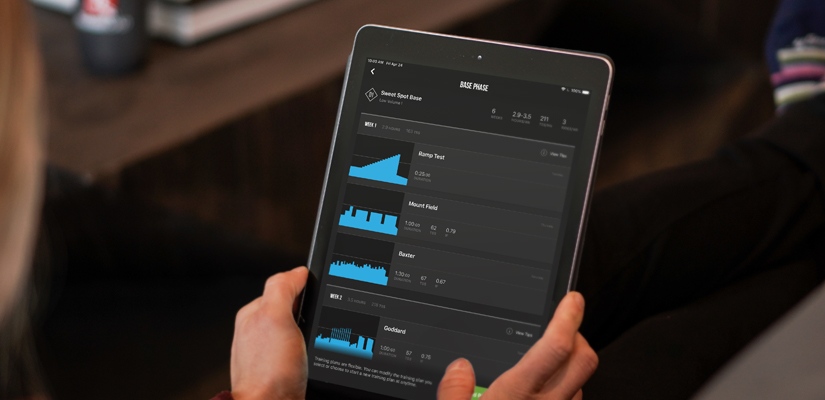It’s a strange time for endurance athletes. With pandemic-related cancellations affecting events around the world, many of us face the reality that racing in 2020 may already be over, and an obvious question remains: What now?
Key Takeaways:
- Events guide short-term training, but long-term improvement is a goal independent of a race calendar
- Maintaining some structure in training is easy and far more beneficial than aimless riding
- Fitness is cumulative year-over-year and continuing to train now can make you faster next year
- This is a great time to experiment- try a training plan you’d never allow yourself to try during a normal race season
- If you are unmotivated, try a low-volume or maintenance plan to supplement riding for pleasure
- When in doubt, sweet spot base training is always a good idea.
Goals and Motivation
The suspension of an entire season of racing is unusual, but a disruption in competition is not. At some point, every amateur athlete experiences a hiatus from events as families, injuries, and work obligations inevitably intervene. So while this season’s pandemic is unprecedented, training without a goal or purpose in sight is not. Reflecting on why we train and how we can find motivation outside of an event calendar is therefore a useful exercise for everyone.
Goal events inform both the schedule and specificity of a training plan. Removing target events might seem to leave you without a purpose, but it’s important to think of events as short-term goals. Few athletes plan to ride their target race and then immediately quit for good. We all chase constant progression and as soon as one race ends, we think of the next. This year, our short term goals may be gone, but longer-term improvement can serve as our new guiding purpose.
This is easier for some athletes than others. Lacking races, some of us find our motivation is more personal and embrace the validation and self-discipline of improving fitness. For others, the lack of target events creates a void and motivation to train is diminished. Whichever camp you fall into, adjusting your thinking towards long-term improvement can help you plot a productive path forward.
Maintaining Structure
Structured training is scientifically proven to be the most effective way to get faster. This is true within a season, but also over the course of multiple years. Thus, any athlete who wants to play the long game would be well-advised to maintain structure in some form.
Some athletes find the rhythm and framework of a training plan to be grounding and mentally comforting. For others, structure can feel restrictive and superfluous without a clear target in mind. Both types of athletes should realize that structure over the long-term doesn’t always mean perfectly adhering to a high-volume plan. Instead, it might simply mean maintenance, with as little as three short sessions of intervals per week. Low-volume Build and Time-Crunch training plans are perfect tools for this.
There are many benefits for keeping a focused approach. Sustaining decent fitness is easy, and it’s always easier to maintain than to rebuild. In addition, gains are cumulative over time, with an athlete’s baseline increasing for every season he or she spends at high levels of fitness. The fitter you’ve been, the easier it is to return to a peak later on, and the higher your potential to improve becomes in the future. By continuing to train this year (even if at a reduced level) you’re laying the foundation for big victories next season.
A Time to Experiment
Racing brings a pressure to perform that discourages experimentation in training. One distinct upside of a season without events is a lack of consequences for an unconventional approach. Take this season to try something new and to work on a weakness you’ve neglected. If you are a crit racer who normally focuses on shorter efforts, try a sustained power plan to see how your body reacts. If you typically train at a certain volume, try a few weeks at higher or lower volume and see how it affects you. Even if a new approach turns out to be sub-optimal, you’ll learn something about your capabilities. Any training is “money in the bank” for long-term progression, and there’s plenty of time to sharpen up before next year’s goals.
If you are the type of rider who still feels highly motivated, capitalize on this motivation. Create a self-designed goal “event” a few months down the road, and use Plan Builder to train for it. You might go for a PR in a local Strava segment, plan an everesting, or create a “stage race” of several long days in a row. Work towards the goal and enjoy the process.
Adaptive Training
Get the right workout, every time with training that adapts to you.
Check Out TrainerRoadIf you are feeling unmotivated to train, shift to maintenance mode. Instead of designing a plan for an imaginary event, add a low-volume base or maintenance plan to your calendar and incorporate it into otherwise unstructured riding. Ride for pleasure and fun, and use Outside Workouts to add a few intervals to some of your rides. Don’t stress over completing every workout perfectly, but remember that every workout you do complete will help you come back stronger next year.
If you want to achieve the most useful long-term results and don’t feel like overthinking things, you can’t go wrong by following a Sweet Spot Base plan. Sweet Spot is very effective and efficient, and not as mentally or physically taxing as high-intensity work. Best of all, it’s easy to incorporate into almost any type of ride, whether you’re riding indoors or out, on flat or hilly terrain, on- or off-road. While base training is usually thought of as an early-season regimen, the reality is that more base is always a good thing and comes with very little risk of fatigue or overtraining. Specificity is important during race season, but when you are not targeting a particular event, Sweet Spot is the most versatile way to build your engine.
Finally, this is a great time to begin incorporating some strength and mobility training. Many of us worry during race season that this will leave us fatigued, but there’s no reason to fear this now. This is an ideal time to get your body used to a functional strength routine, and by maintaining these habits and improving your versatility as an athlete you’ll become a healthier person overall.
Reset and Refocus
The only thing you can do wrong during this time is to not take advantage. However motivated you feel now, completely neglecting your fitness will only come back to haunt you later on, and maintaining some simple structured training is easy and fun. Enjoy the ride, get back to basics, and build a foundation for later. Just a few interval sessions per week now will help enable a greater enjoyment of your sport, long into the future.
For more cycling training knowledge, listen to Ask a Cycling Coach — the only podcast dedicated to making you a faster cyclist. New episodes are released weekly.

